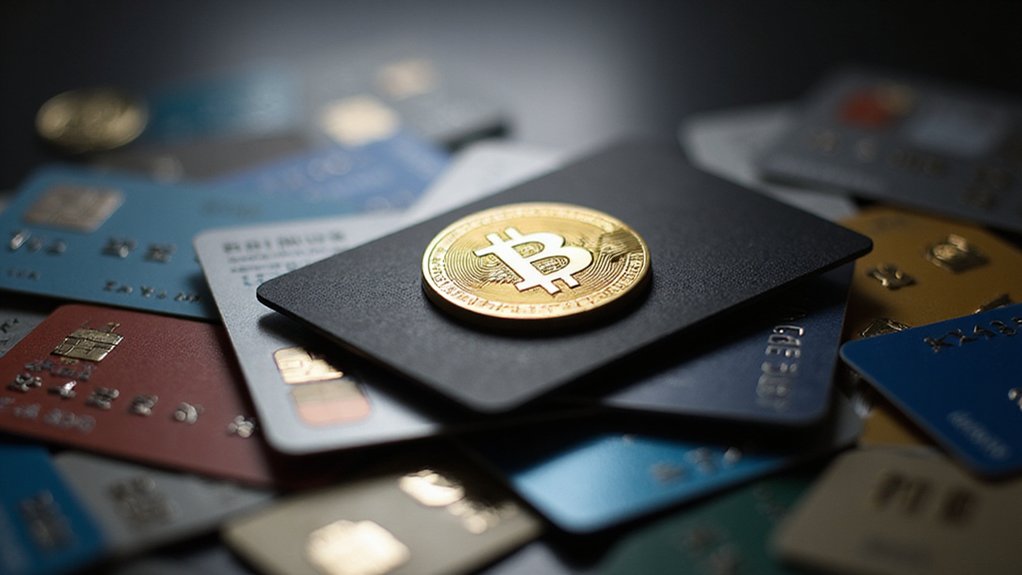While traditional credit cards have spent decades training consumers to chase airline miles and cashback percentages with the fervor of bargain hunters at a department store clearance sale, crypto credit cards have emerged to offer something decidedly more volatile—and potentially more lucrative.
The global crypto credit card market, valued at approximately $1.3 billion in 2024, represents a fascinating experiment in monetizing volatility. These digital-age financial instruments function by connecting users’ cryptocurrency wallets to payment networks, converting digital assets into fiat currency at the point of sale—a process that transforms every coffee purchase into a minor exercise in foreign exchange trading.
What distinguishes crypto credit cards from their traditional counterparts isn’t merely the underlying technology, but the fundamental nature of their rewards structure. Instead of accumulating static cashback percentages or airline miles (which depreciate faster than a rental car), users earn cryptocurrency rewards that can appreciate in value. A typical 2% Bitcoin reward, for instance, becomes considerably more interesting when Bitcoin experiences one of its characteristic upward surges—though the inverse remains equally true during market downturns.
Crypto rewards offer thrilling portfolio volatility where traditional cashback delivers predictable mediocrity—transforming every purchase into speculative investment.
The appeal extends beyond simple reward accumulation. Europeans, apparently comfortable with financial experimentation, have embraced crypto cards for micro-spending, with 45% of transactions falling below 10 euros. This preference for small-scale digital transactions suggests a broader shift away from cash-based purchases toward blockchain-backed alternatives. North America dominates the global crypto credit card market share, driven by a large population of cryptocurrency enthusiasts and a thriving fintech environment.
The projected compound annual growth rate of 8.6% through 2033, reaching an estimated $2.73 billion market size, reflects growing consumer appetite for cryptocurrency integration into everyday financial activities. However, this growth trajectory faces headwinds from regulatory uncertainties and the inherent complexity of cryptocurrency management—barriers that continue to limit mainstream adoption. The integration of decentralized exchanges into the broader DeFi ecosystem enables more sophisticated cryptocurrency management and trading capabilities beyond traditional card rewards.
Perhaps most intriguingly, crypto credit cards transform routine spending into involuntary portfolio building. Users inadvertently accumulate digital assets through mundane transactions, creating what amounts to a forced savings mechanism backed by blockchain technology rather than traditional banking infrastructure. Traditional cash back cards maintain their appeal by offering flat 2% rewards with no annual fee, allowing users the flexibility to invest those earnings in any cryptocurrency of their choice.
The ultimate question remains whether consumers will embrace rewards that fluctuate with market sentiment over the predictable mediocrity of traditional loyalty programs. Early adoption patterns suggest many find the potential for appreciation worth the accompanying volatility—a sentiment that would make traditional bankers either envious or deeply concerned.








